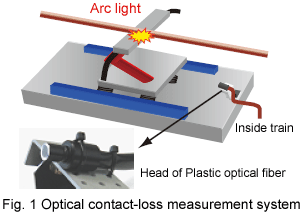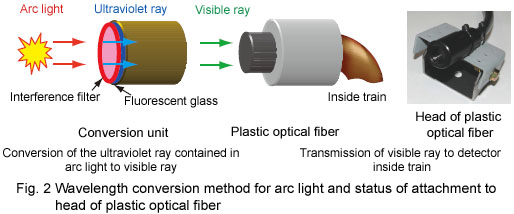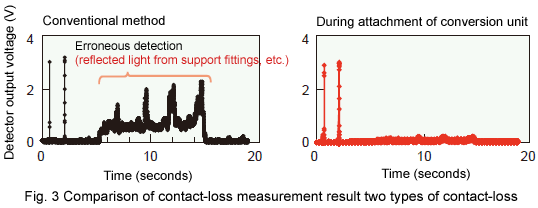Arc discharge generated during contact-losses of contact wires and pantographs is accompanied by strong light, which also causes noise, and result in wear to the contact wires and pantograph contact strips. To measure the generation status of such discharges, optical contact-loss measuring systems, in which optical fibers connect the acceptor on the train roof to the detector inside train, are installed (Fig. 1). The conventional measurement system using plastic optical fibers detect visible rays. This meant that light from other sources (such as solar light and reflections from support fittings) were erroneously detected, and measurement could be difficult in some cases.
To solve this problem, arc discharges were generated with some materials of contact wires, and the wavelengths of the resulting arc light were investigated in detail. Consequently, it was found that arc light contains an especially high intensities in the ultraviolet wavelength region of 200 to 240 nm, even compared with solar light. Accordingly, the RTRI developed a conversion unit using fluorescent glass to convert ultraviolet rays into visible rays (Fig. 2). Contact-loss measurement can be performed without influence from solar light by attaching this conversion unit to the heads of conventional plastic optical fibers.
The measurement system with the conversion unit attached have used in contact-loss measurement on conventional lines and led suitable results to analyze data. We will verify the detection sensitivity through running tests on Shinkansen lines, and aim to also install the system to inspection cars.
|





